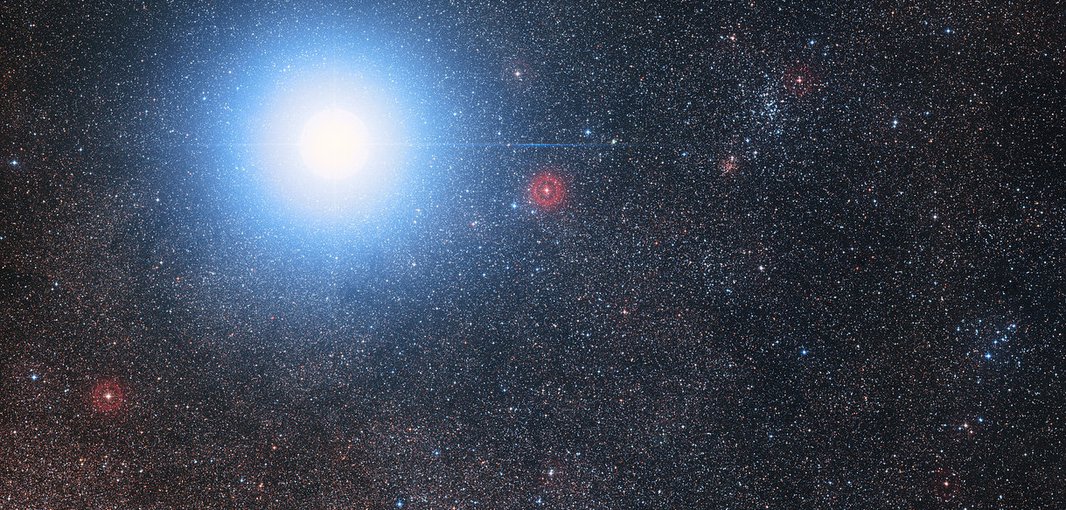
Feb. 12, 2018
Research Highlight
Planetary Mineralogy for the 10 Closest Stars

This image of the sky around the bright star Alpha Centauri AB also shows the much fainter red dwarf star, Proxima Centauri, the closest star to the Solar System. Proxima Centauri has an Earth-size planet that orbits in the habitable zone.Image credit: Digitized Sky Survey 2. Acknowledgement: Davide De Martin/Mahdi Zamani Text: exoplanets.nasa.gov.
The simplest concept of a ‘habitable zone’ around a star takes into account the physical distance between a planet and its host star. However, the habitability of a planet includes many more factors, including chemical and physical processes that regulate climate.
The composition of a planet is intrinsically connected to the composition of its host star. As such, stellar abundances of planet-building materials could provide insight into the composition of the planets they harbor. With this in mind, a recent study examines the potential composition of theoretical planets around the ten closest stars to the Sun. The authors provide the abundance uncertainties for elements that will be needed in order to distinguish planetary populations in the study sample of stars.
The paper, “The Star–Planet Connection. I. Using Stellar Composition to Observationally Constrain Planetary Mineralogy for the 10 Closest Stars,” was published in The Astrophysical Journal. The work was supported by the Nexus for Exoplanet System Science (NExSS). NExSS is a NASA research coordination network supported in part by the NASA Astrobiology Program. This program element is shared between NASA’s Planetary Science Division (PSD) and the Astrophysics Division.